The Algarve, Portugal
This Old World region on the Atlantic Ocean is the best place in the world to retire that nobody’s talking about. The Algarve, Portugal has been named the best retirement spot for 3 years in a row.
This is a land of cobblestoned streets and whitewashed houses. With lace-patterned chimneys, surrounded everywhere by fig, olive, almond, and carob trees.
Also, The Algarve aoffers great weather, with 3,300 hours of sunshine per year. So, more sunny days than almost anywhere else in Europe.
The Algarve’s 100 miles of Atlantic coastline is full of jagged rock formations, lagoons… and extensive sandy beaches.
Many awarded coveted Blue Flags from the European Blue Flag Association. Also, the region boasts 42 golf courses in less than 100 miles.
It’s generally recognized as a top golfing destination in continental Europe… and the world.
Plus, The Algarve has a reputation as a top summer destination among European sun-seekers. Also, as a top winter retreat for those looking to escape Northern Europe’s coldest months.
Health care is international-standard in this part of the world. Hence medical tourism is a growing industry.
Expats In The Algarve, Portugal: A Retirement Haven
Portugal’s Algarve is home to more than 100,000 resident foreign retirees. Algarve is a safe region, with very little crime and a laid-back lifestyle for expatriates.
This destination caters to families and retirees.
Due to the wide variety of cultural, nature-based, sporting, gastronomic, and other activities.
Algarve is the chosen retirement destination for more than 100,000 resident expats from around the world. Because it has Europe’s best beaches, best golf courses, and one of the friendliest folk.
You could join the many expats who gather for tennis at the Carvoeiro tennis club. Carvoeiro also has a well-stocked book exchange to trade in books they have read for new titles.
Many retired expatriates become involved in local community or charity work… there is no shortage of opportunities to contribute to society and make a real impact. While also help you integrate faster into local culture.
Making friends is easy, both with the locals and the expatriates.
To speak English is common in the country. Because of Portugal’s strong historic and cultural links with England. This is true throughout the entire country. But especially in the Algarve, Portugal… making this an ideal retirement spot.
Eastern Algarve
The central Algarve, between Faro and Lagos has become popular in the last few years. Yet, eastern Algarve remains unspoiled, and all the better for it. Prices are lower and the life here is more traditional and authentic.
While not as lively as the central Algarve, it is ideal for anyone who enjoys the simple pleasures of good food. Also fantastic scenery and a relaxed pace of life.
Artists and small business owners love it here. They have been opening boutique businesses such as hotels, restaurants and craft stores.
Prices have been increasing. But are still well behind what you would pay in the more developed regions to the west.
Olhao
This fishing port is close to Faro, about 10 minutes by car or train. It has become a favorite haunt of creative types and bohemians. This is a small town of approximately 40,000. What was once a quiet fishing village is now the busiest fishing port in the Algarve.
Needless to say, the fresh fish is delicious. Hence why there are some excellent, traditional, Portuguese fish restaurants.
As in Spain, people have a deep respect for the importance of lunch hours. Lunch time is between 1 pm and 3 pm. Keep a close eye on your watch as you will not get served outside these times.
Head down to the Ria Formosa for a stunning view across the marshes while you enjoy your meal.
Olhao is a short boat ride away from the Islands of Culatra Armona and Farol. The islands have plenty of natural beauty. All with different birds wading along the shore as well as tide pools to explore.
The water can be chilly, but is perfect for cooling off after time spent under the hot sun.
Olhao has a famous market which is only open on Saturdays. Located near to the harbor you will find fresh fruit and vegetables, local meats, cheeses… and alcohol alongside the ever present seafood. It’s a great way to take in Portuguese life. As well as a way to eat cheap, local, produce which will help your waistline and your bank balance.
If fresh seafood and produce is your thing, Olhao in Algarve, Portugal, will be meet your retirement standards.
Tavira
Tavira is an historic town which bridges both banks of the River Gilao. The town dates back to pre-Roman times. Architectural influences include Islamic and Phoenician alongside Roman and traditional Portuguese.
The whitewashed buildings from these different styles give the town a unique feel. Once you step away from the waterfront, where fishermen sell their catch and boats come and go… the feel of the town is slow and sleepy.
Tavira castle tower provides a panoramic view across the town and is a great place to take photos. The anchor graveyard on Barril Beach is a tribute to the regions fishing history. It makes for an unusual and eerie photo opportunity.
Tavira has lots of churches to visit. This includes the medieval Church of Carmo and the Church of Santiago. Which was built on the site of an ancient mosque. The historic center was rebuilt after a huge earthquake in 1755.
The architecture here is different to a lot of the surrounding areas. If all this seems to be right on your lane, this town in Algarve, Portugal, is where your retirement could take place.
Evenings revolve around good food and good drink. Fine Cataplana restaurants serve Portuguese specialty seafood and rice dish.
The Portuguese cook this in a copper pan. The local wine is an excellent and very inexpensive accompaniment.
Vila Real De Santo Antonio
Vila Real de Santo Antonio is one of Portugal’s earliest examples of urban planning. Built after an earthquake in 1755. It also decimated the central square in Tavira.
Santo Antonio has long been strategically important to the Portuguese. This is because the river it is built on serves as the border with Spain.
The two countries have not always had the best relationship. Hence why strong fortresses in Santo Antonio were essential.
The town is especially popular with Portuguese tourists. And often overlooked by British and other European and American travelers. River cruises which sail up and down the Guadiana are a popular way of spending a few hours.
You can find plenty of boats for hire. Each with different package deals to best suit the experience you are looking for. Most journeys involve stops along the way at quiet villages where you can grab an ice cream or cold drink.
The most striking building is the Farol de Vila Real de Santo Antonia. Built in 1923, it is still functioning today. Visitors can climb the stairs (or take the lift) to the summit on a Wednesday afternoon. From there you’ll get to see a spectacular view across the bay and sparkling sea.
Vila Real de Santo Antonia has some pristine blue flag beaches and. Praia Verde and Praia de Monte Gordo are the pick of them.
The water here is much warmer than in other parts of Portugal. Because it’s close enough receive the warmer waters flowing from the Mediterranean.
Both beaches have lifeguards throughout the summer months as well as other amenities. Such as beach chairs and nearby restaurants and bathrooms. This place in Algarve, Portugal, is the perfect place for retirement.
Cost Of Living In The Algarve
The Algarve, Portugal, is the best retirement option in Western Europe for the retiree on a budget. The cost of living in Portugal is among the lowest in Western Europe. On average 30% lower than in any other country on the Continent.
A retired couple could live in Algarve modestly on a budget of as little as 1,099 euros per month. With a budget of 1,780 euros per month or more, you could enjoy an appointed lifestyle in the heart of Old Europe.
Read more: Health Care In Portugal
Apartment or House Ownership Budget (for a couple)
Apartment Or House Rental Budget (For A Couple)
Penny-Pincher’s Budgets (for a couple, bare minimum costs)
Climate In The Algarve
The Algarve has the best climate in Europe, meaning the most days of sun, and it also gains from prevailing winds. Between the water and the wind, this region is never unbearably hot and rarely humid.
Temperatures range between about 60°F and 90°F with humidity hovering around 80%. There are no hot or cold months here, but January and February are the coolest, July and August the warmest.
Entertainment
Lagoa is an artistic hub. It’s home to a musical academy, a cultural academy, and an arts center. Also, Portugal’s principal foreign newspaper, The Portugal News. The musical academy has an active orchestra with musicians ages 8 to 65.
Throughout the year there are open-air jazz and classical concerts, most free. Experience jazz at Lagoa’s Sitio das Fontes and local youth concerts at the Lagoa Auditorium.
The Arade Congress Centre is the place to come for special events. From a motorcar launch to a performance by the Russian ballet… or the finals of the World Dance Championships.
Living In The Algarve, Portugal, And Earning Online
By Yayeri Van Baarsen
The advantage of making my living as a writer, journalist, and translator is that I can work from anywhere in the world.
Unfortunately, my computer doesn’t like being covered in sand, and the screen becomes unreadable in bright sunlight… so “anywhere” doesn’t include the beach… as I hoped it would when I made my move to Portugal’s Algarve coast.
Alas, I’ve resigned myself to enjoying the beautiful Algarve beaches and landscapes from the window by my desk… at least while I’m working. And I comfort myself with the constant thought that they’re just steps away when my work is done.
I could ditch the writing and sell ice cream or rent out sun loungers on the beach, but those kinds of pursuits have lost their appeal at my age.
Having spent several summers as a club rep in Spain and winters as a ski teacher in Austria, I’d always connected working in a popular holiday destination with a job in the tourism sector.
So when my boyfriend Kyle and I first arrived in Portugal, we decided to try to earn our income managing holiday cottages.
The advantage of this was that we got to stay in one of the cottages free.
The disadvantage? We were staying in one of the cottages, which happened to be on the same piece of land as all the other cottages.
As a result, we had holiday-makers knocking on our door at all times, asking for laundry detergent, directions to the nearest beach, or the weather forecast.
We even had people come in without knocking, search through our drawers for a potato peeler, for example, while I stood in the shower listening, too stupefied to do or say anything.
Basically, we never had any time off.
Which is fine when you’re doing what you love. It’s not fine when your passion is writing, but you’re spending your time cleaning toilets and replacing gas bottles.
Earning Money With Our Online Magazine
Finally, Kyle and I decided to follow our passions and set up our own online magazine. We had both worked for a digital magazine in the U.K. Plus, I have a journalism background, and Kyle has an excellent eye for photography.
That was a few years ago. The magazine continues today. It’s great fun to produce and has created a great opportunity for getting to know this region.
In the short time we’ve been here, we’ve seen and experienced more of the Algarve than other expats who’ve lived here for over a decade.
I’ve tried crazy sports like flyboarding, learned how to make carob liquor, and soaked in a muddy salt pan.
I now know loads about cork, olive oil, and porco preto (“black pork,” a local delicacy).
I’ve spoken to marine biologists about the ins-and-outs of breeding seahorses in captivity, and Portuguese 70-somethings living in forgotten villages have shown me how they still plough their fields every day with the help of a donkey.
The only downside?
Our magazine doesn’t make any money yet, so, in addition to producing it every month, I’m spending more time than ever behind my computer, writing freelance for a range of publications (including this one!) to pay the bills.
I’m definitely working more now than I ever did back home, but, when you’re doing something you love, it doesn’t feel so much like work. And the good news is that I don’t have to earn a lot to live well here.
In Portugal, the minimum monthly wage is 775 euros. That puts things into context. Rent, groceries… everything, really, is very affordable.
However, if you aren’t making the move with retirement income or a nest egg, you will still have to make a living…
If you aren’t fluent in Portuguese, setting up your own business can be the answer. Plus, running your own business allows you to do what you love.
A lot of expats I know have started their own businesses, doing things they like to do… everything from photography and teaching yoga to managing a bed-and-breakfast or developing an app.
One was so inspired by the beautiful Algarve countryside that she decided to run writing retreats from her home. Another, who’s crazy about surfing has opened his own surf shop.
Other enterprises include a gardening company (plants grow well in this Mediterranean climate), an English news website (for the region’s many English-speaking expats), a land-sailing center (in the windiest corner of the Algarve!), and a film production company (the scenery here is stunning).
The there’s also the cooks who sell delicacies from their home countries—Dutch poffertjes (mini pancakes) and German bratwurst, for example—at the Portuguese markets.
All these people are earning enough to support themselves. They aren’t eating out every day or spending hundreds of euros on new clothes or thousands on fancy cars… but they are living comfortable lives in this beautiful place.
Am I envious of friends back home who have high-earning jobs and can afford to stay in five-star hotels whenever they go on holiday?
Sometimes, yes.
But when I look up from my computer at the view outside my window over the
Serra do Caldeirão, I’m happy with my life.
I really enjoy the freedom and flexibility I have here. I’m working hard, but I choose my “office” hours. And, when I do shut down my computer, I’m just a step away from sunshine.
Back home, wintertime sometimes meant going days without seeing the sun. The office I worked in had a window, but it looked out on a concrete wall.
Now I’m able to eat my lunch in the sun nearly every day. Then, after my midday break, I go back inside and close the curtains to keep the sun’s glare off my computer screen.
When I’m finished for the day, I know the sun is still out there… shining for me.
Get Your Free Portugal Report Today!
Simply enter your email address below and we’ll send you our FREE REPORT — Portugal: The World’s #1 Retirement Haven.
We Value Your Privacy! We will not share your email address with anyone else, period.
Map of The Algarve, Portugal






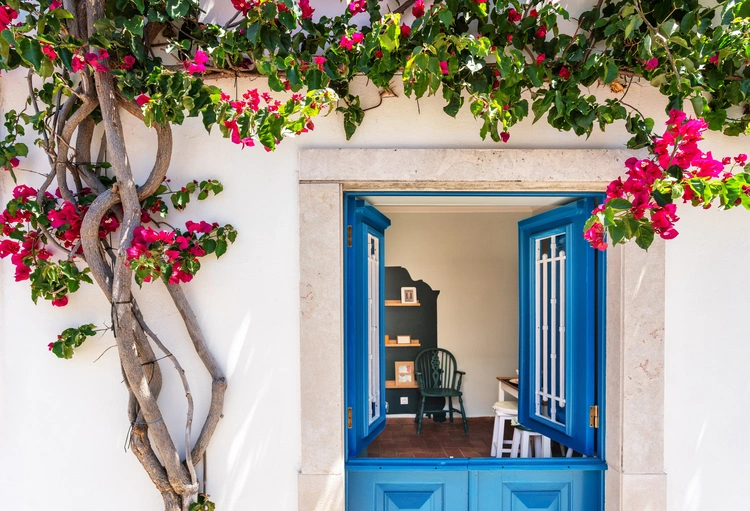





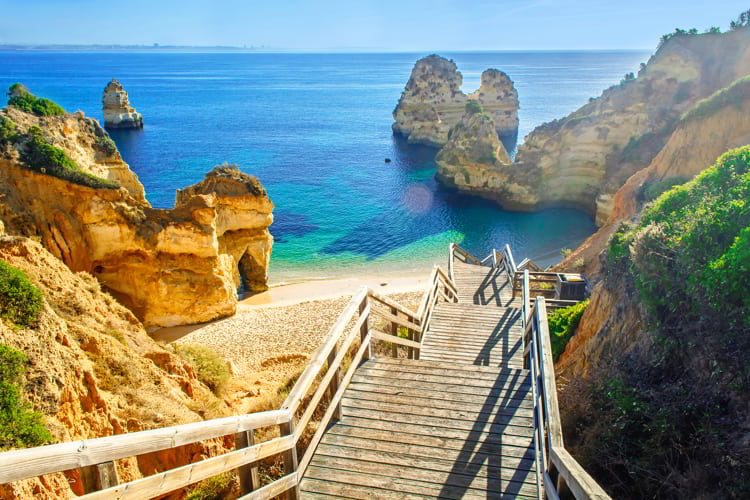
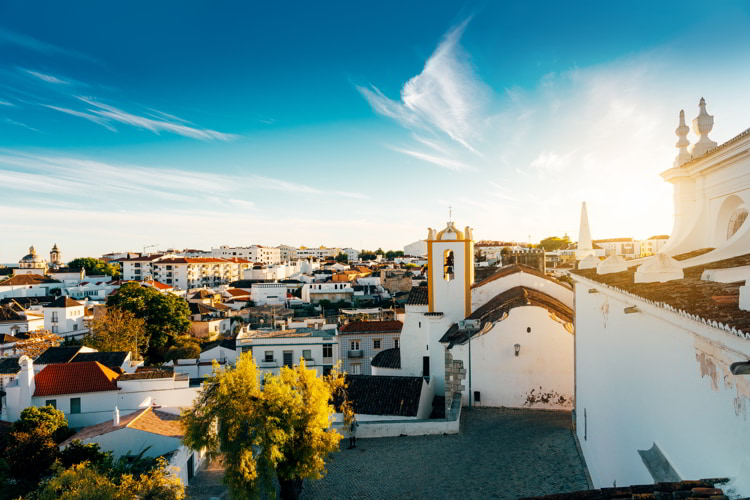 . '
. '
 . '
. '
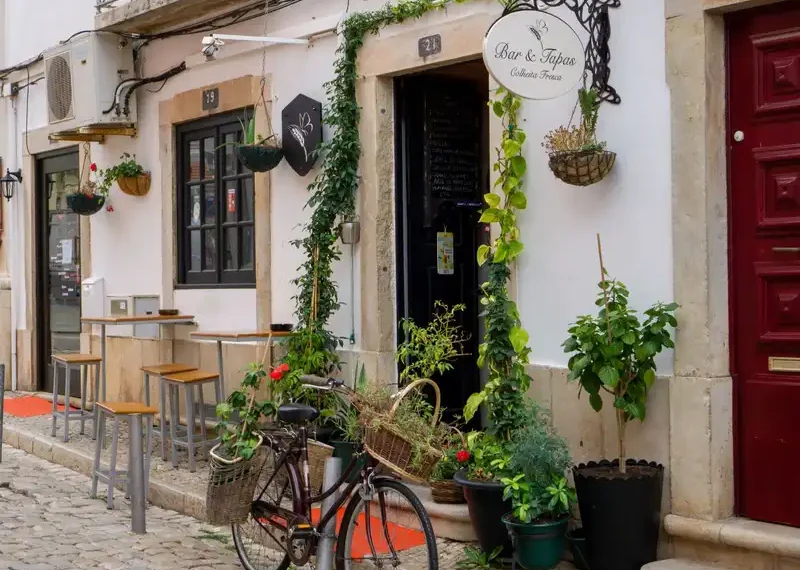 . '
. '
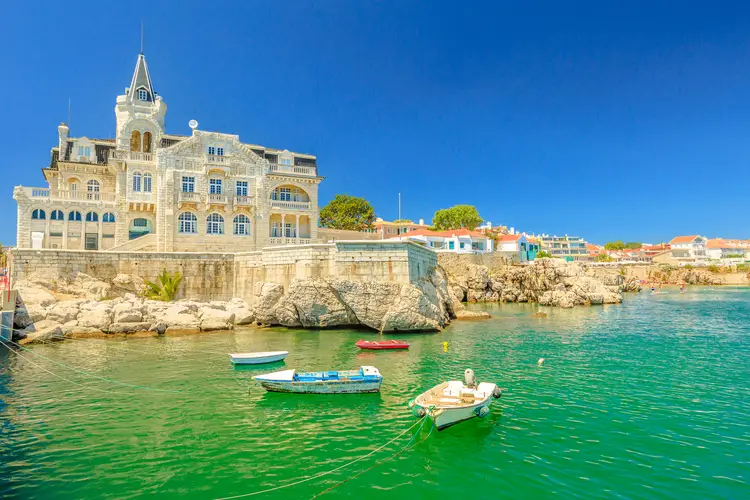 . '
. '
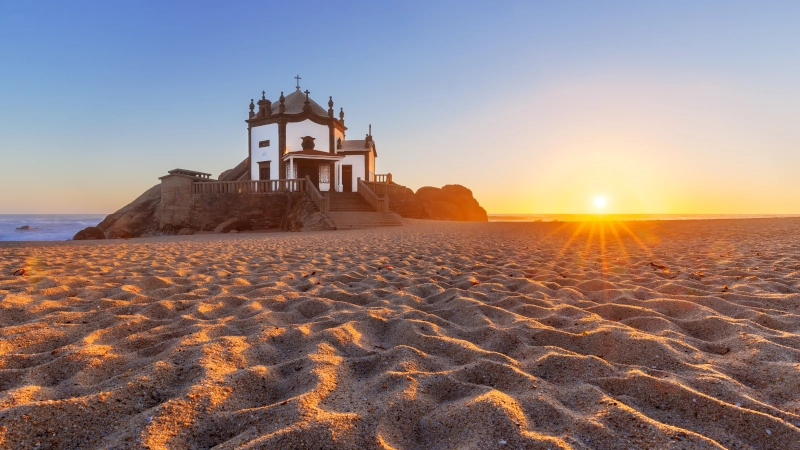 . '
. '








